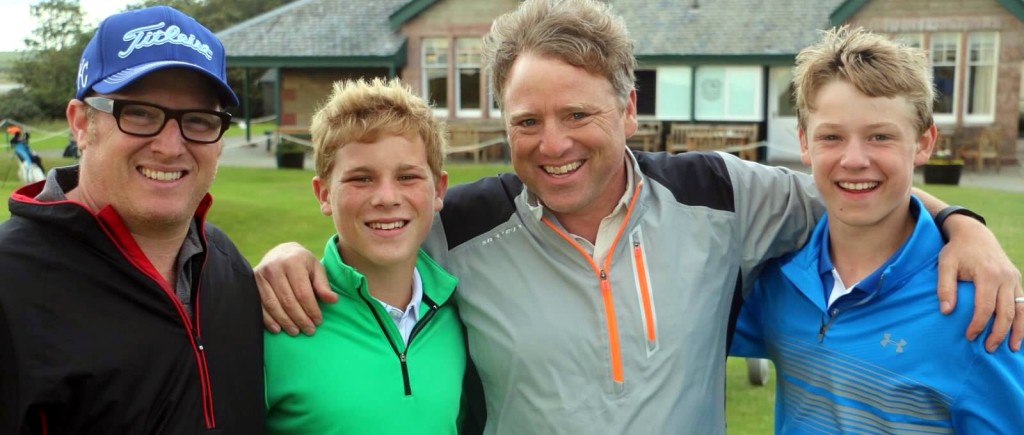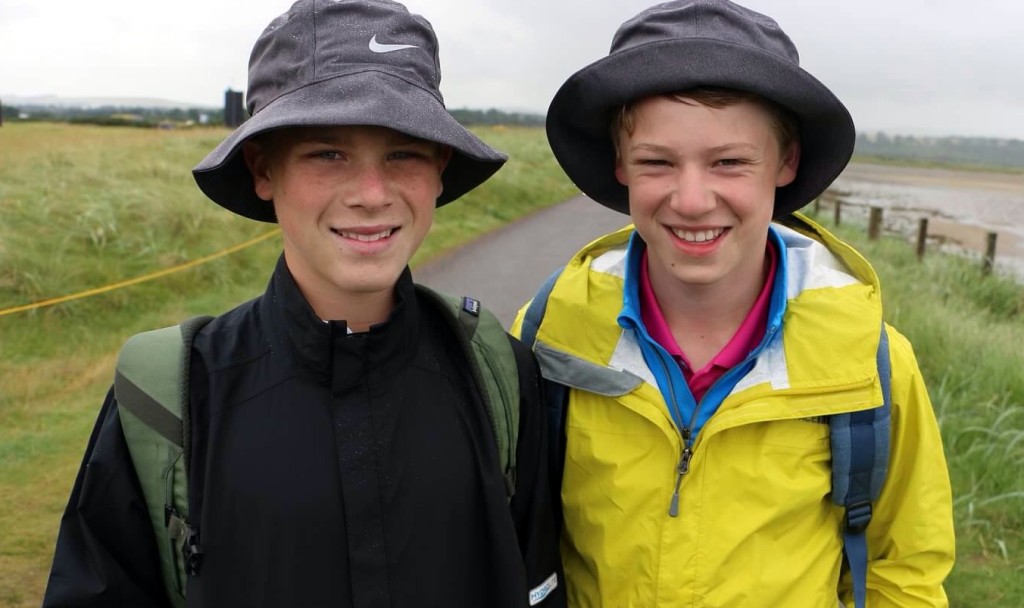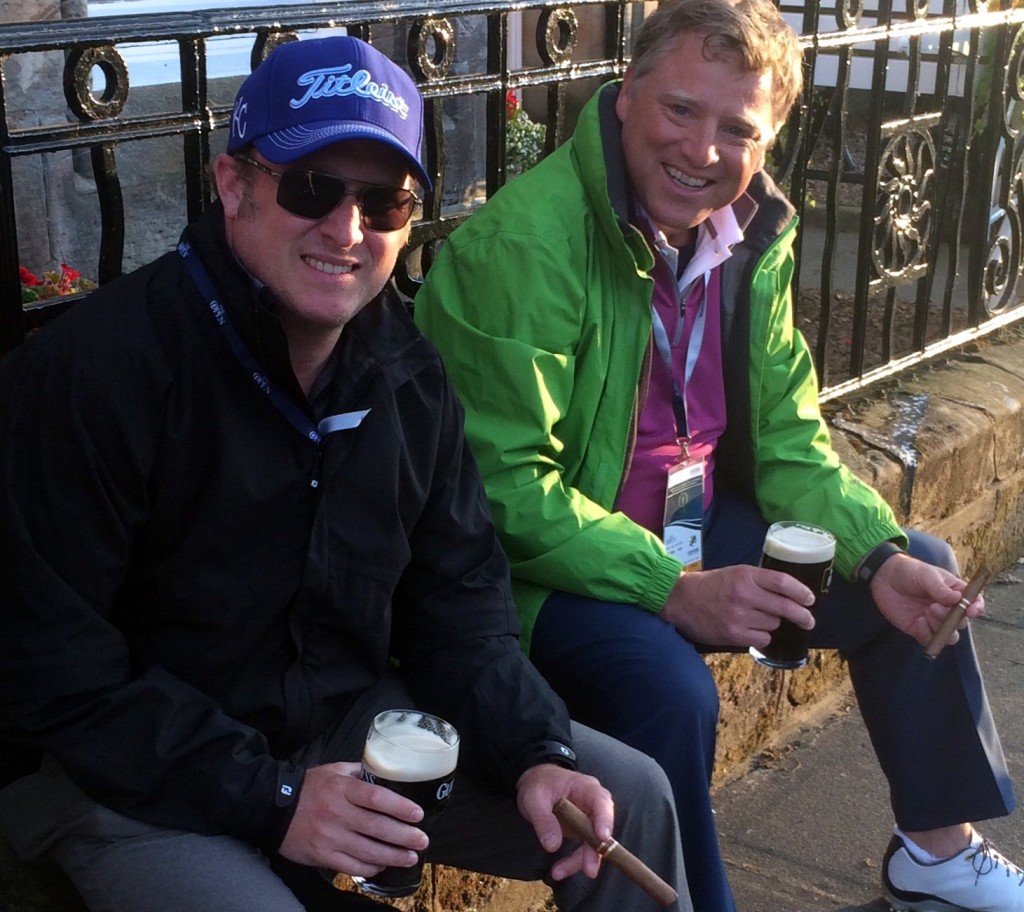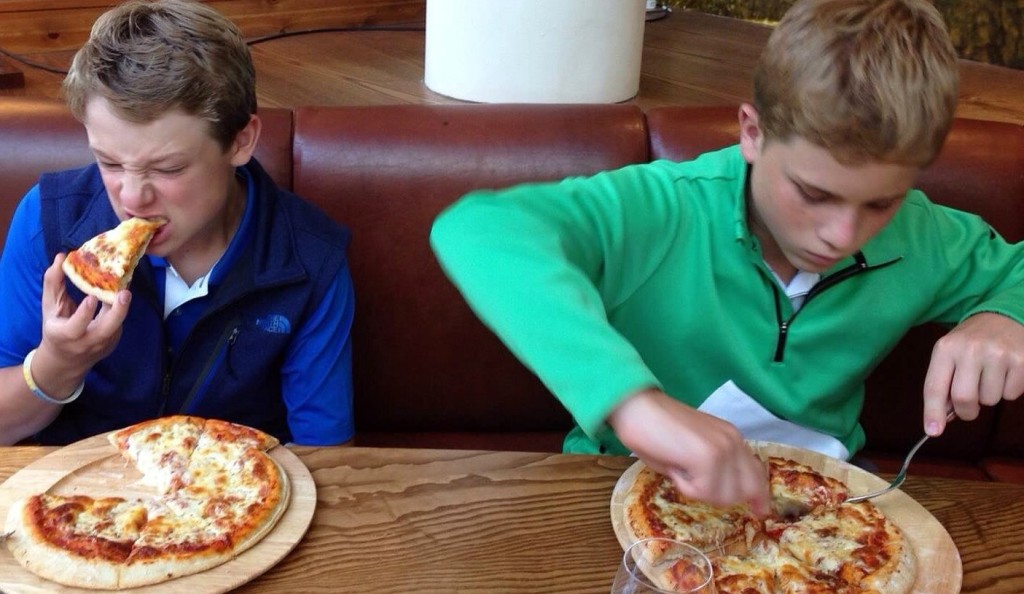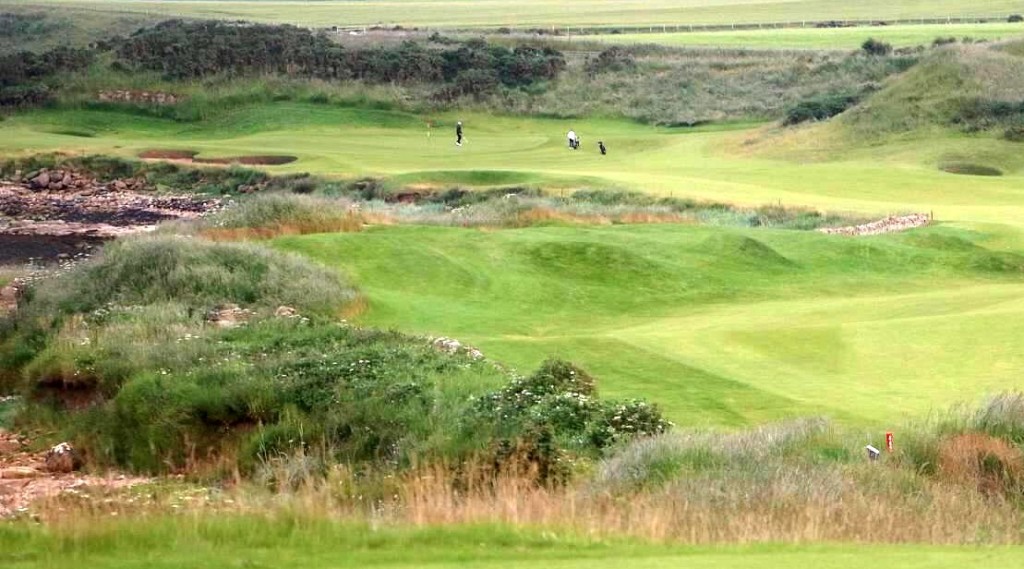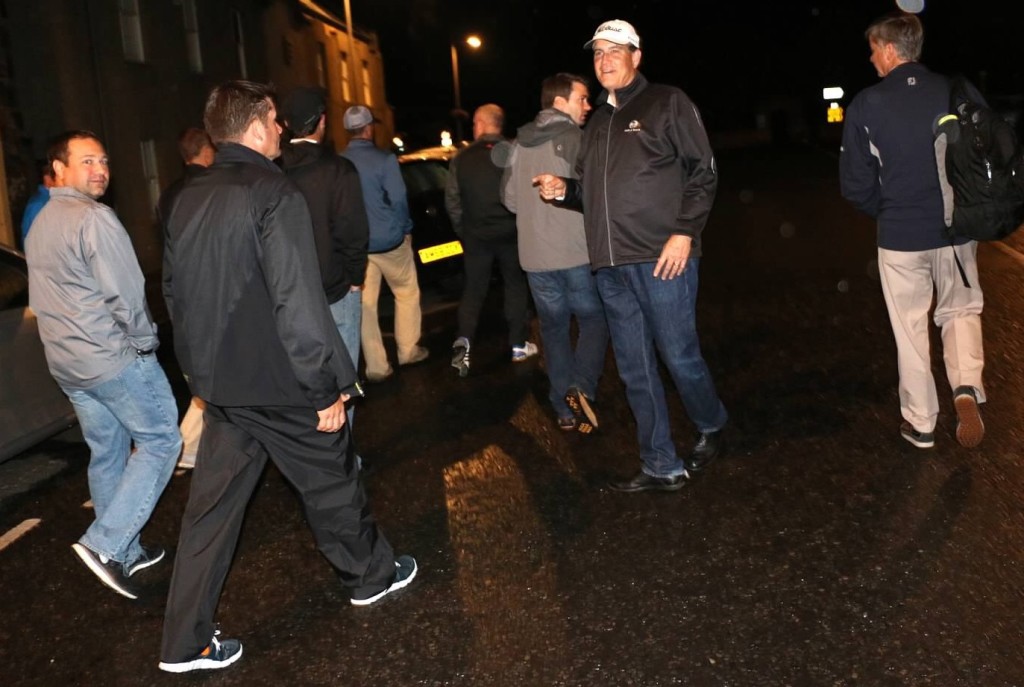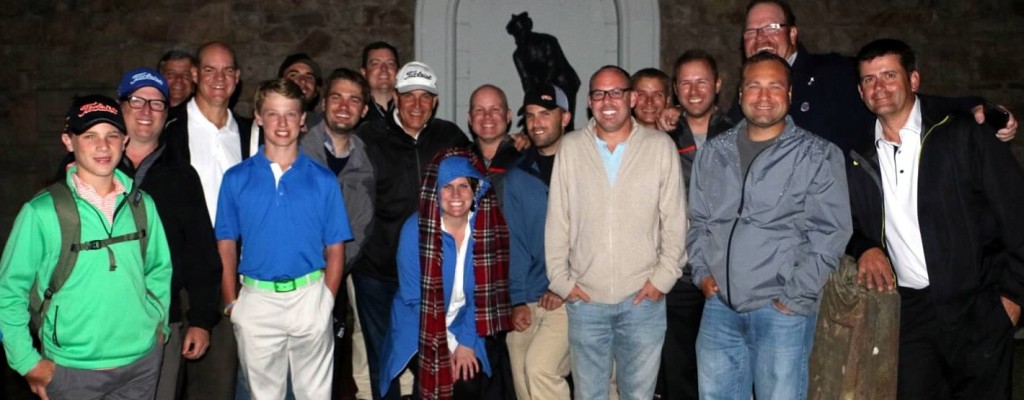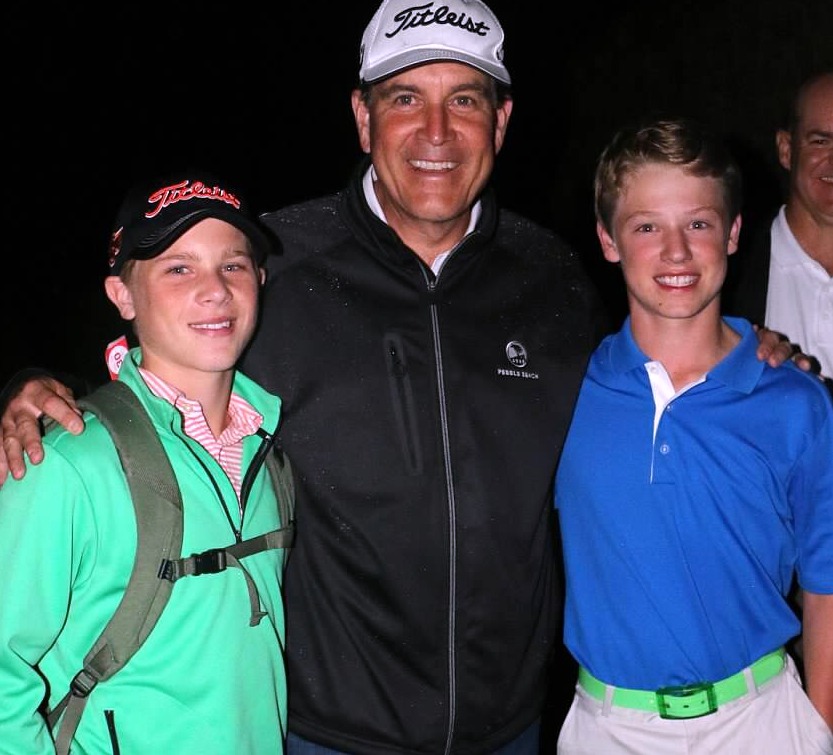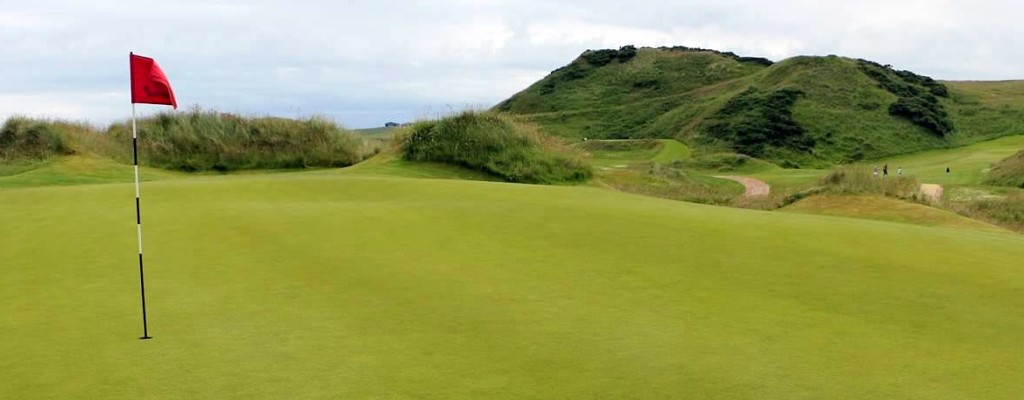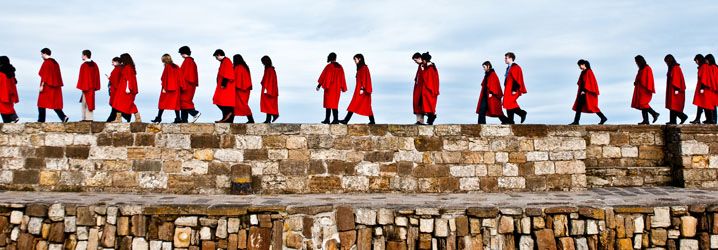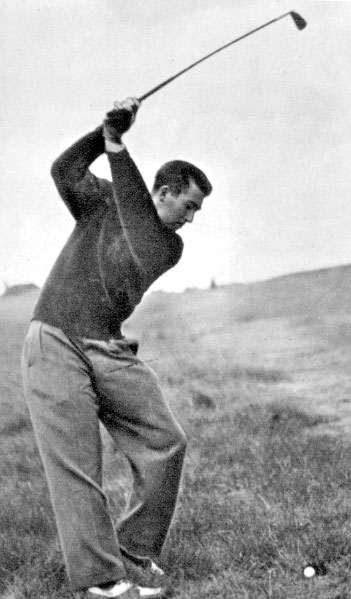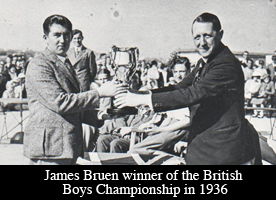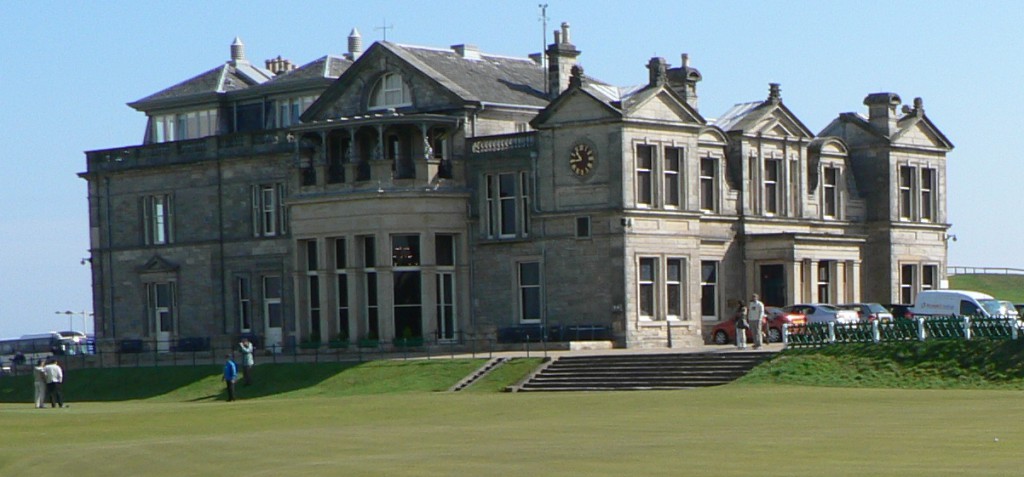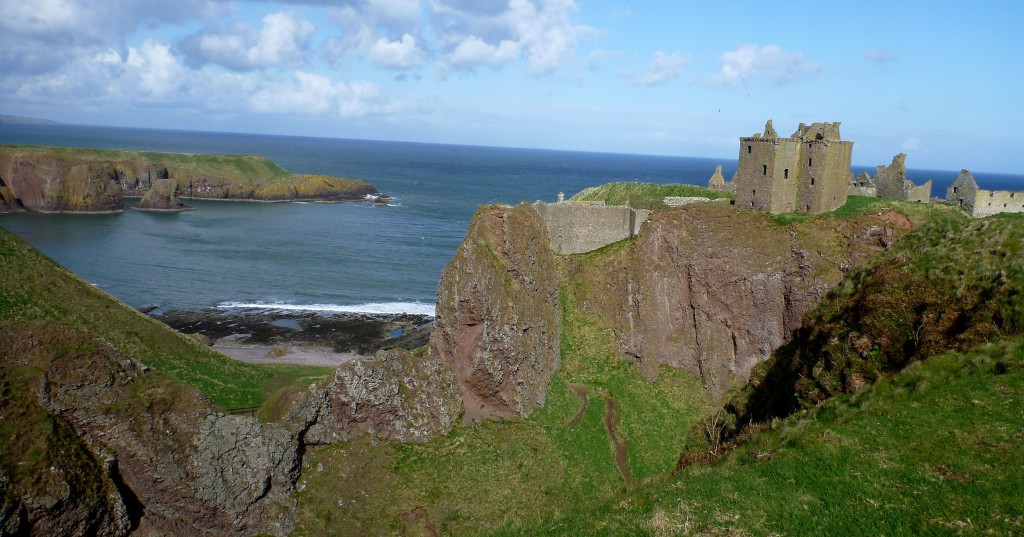In July, Adam Sachs and Mark Cohen, readers in Kansas City, celebrated their sons’ bar mitzvahs by taking them to Scotland to watch the British Open and play golf at Cruden Bay, Kingsbarns and Luffness. Here are the boys, both thirteen years old, at the Old Course at St. Andrews—Elliott Cohen on the left, Phinney Sachs on the right:
And here are Mark and Adam, setting an example:
They saw Tom Watson, who during his heyday was known in Kansas City as the Fourth Franchise, and the boys learned that the Scots know nothing about making pizza:
Adam writes:
“Because the Old Course is close to everything in St. Andrews, we couldn’t help running into players, caddies, journalists and golf-industry hangers-on. The boys got John Daly’s autograph, twice. On Tuesday, at Kingsbarns, which is one of the most enjoyable courses I’ve ever played, we were held up by the French pro Victor Dubuisson, who was two groups ahead of us. He ended up missing the cut, so maybe he should have been practicing on the Old Course instead. Tom Lehman’s sons were between us and him, and we all spent a lot of time standing around. On Friday night, I saw Darren Clarke, who also missed the cut. He was leaning against a wall outside a bar, smoking a cigarette and drinking a beer, and when I called to the boys to come back and meet ‘a real Ryder Cup hero’ he chatted with us and signed their golf flags.
“On Saturday night, we ran into Jim Nantz, who was in St. Andrews as a spectator only (the U.S. broadcast was on ESPN).
“At midnight, we joined him and a group of his friends for a misty walk to the graves of Old and Young Tom Morris. The cemetery gate was locked, so Phinney and Elliott had to help Nantz, Mark, me, and all the other old guys get over the fence.
“Afterward, we went to the bar at the Dunvegan Hotel, around the corner from the 18th green. On the way, Phinney asked Nantz if he would record a voice-mail message for his cell phone. He did:
“Nantz told Phinney that Phil Mickelson had asked him to do the same thing, and that Mickelson reciprocated by recording one for him.”
The Cohens and Sachses went back to the cemetery during the daytime, when the gate was unlocked. There was lots of death in the Morris family:
Among the trip’s many other highlights was golf at Cruden Bay. That’s where Adam took this photo of Phinney and Elliott:
Cruden Bay is one of my favorite courses, too. I ate dinner in the clubhouse there after a late-afternoon round a few years ago, and I heard the waitress ask someone at the table behind me, “Would you like pineapple with it, or a fried egg?” I didn’t dare turn around to see what “it” was. But, like all four Cohens and Sachses, I love the course!

